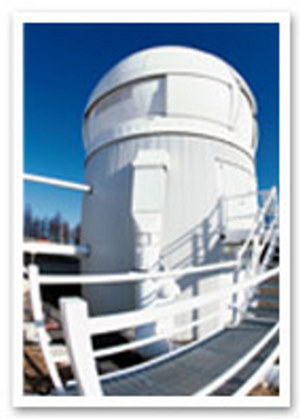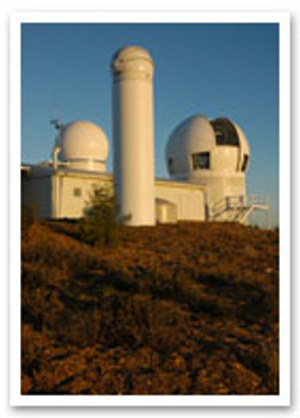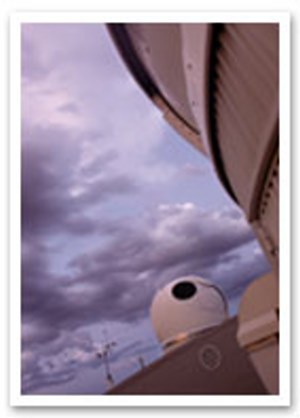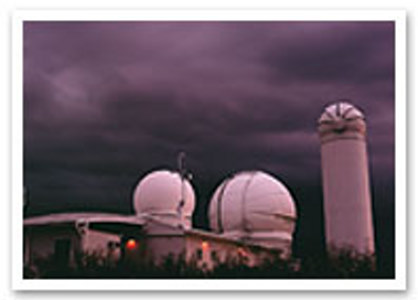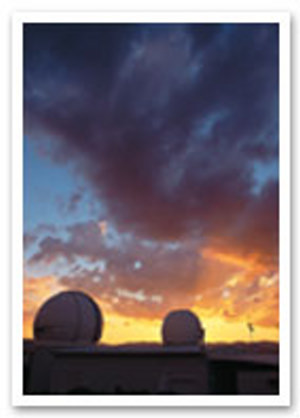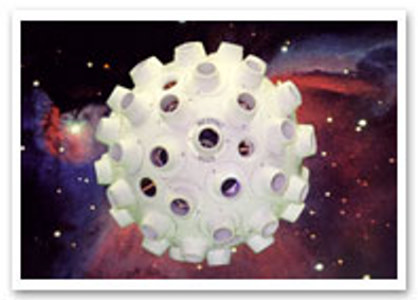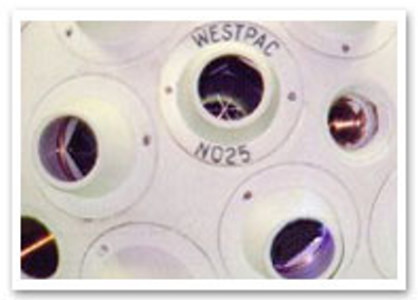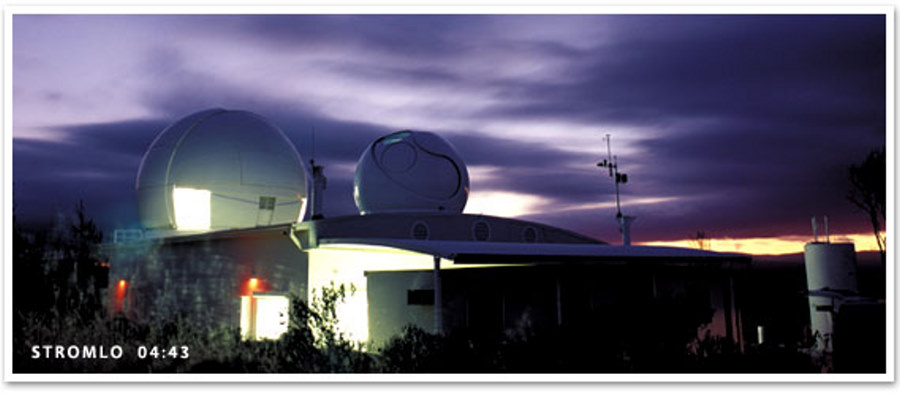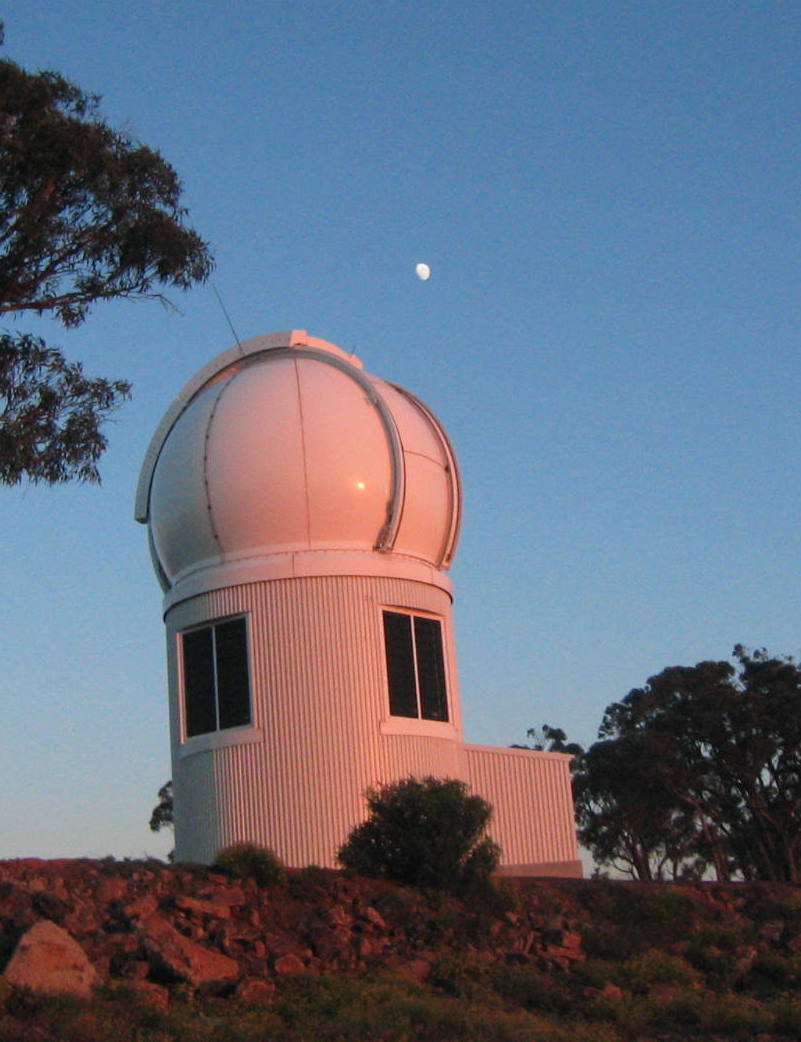|
Laser and Plasma Beams |
||
|
..
Space Ablation Ablation is “the process of generating forces on objects by means of surface interactions with energy projected from a distant point”. Laser beams, directed from earth to intersect with objects in space, generate significant forces if the interaction is carefully controlled. Up until now, the only way to avoid space debris was to adjust your course around it to prevent a collision. EOS is now fine-tuning technology that will allow pieces of space debris and other objects in space to be physically maneuvered into a different orbit using long range high power plasma beam (ablation). |
||
Space Debris
Space debris, or Near Earth Object (NEO) pollution, is man made material trapped in low orbit around the Earth. Space debris is an enormous hazard to deployed satellites and spacecraft which cross the path of the orbiting debris. The debris, consisting of expired spacecraft, old rocket bodies and fragments from missile and satellite explosions, ranges in size from less than 1mm to over 10 mm. Whilst the smaller debris can be largely deflected by the shields (armour plates) on the satellite, larger debris can destroy a satellite at immense cost. The amount of debris in orbit around the earth is increasing. Just one major accident in space and the GEO (geosynchronous) band will be rendered useless for all satellites (you can imagine the impact this would have on global communication). Even without further satellite launches, the debris population will continue to grow. The value of satellites over the decade to 2010 has been estimated at greater than US$400 billion. The longevity and viability of these satellites is under serious threat from space debris. EOS is uniquely placed to provide a solution. EOS currently carry out surveillance using space laser systems to track and catalogue the most potentially damaging pieces of debris. Once the debris is tracked it can be avoided. EOS use automated, high power, eyesafe laser trackers to accurately determine a single debris orbit with only two seconds of tracking. They have so far had success at tracking objects as small as 5mm. |
||
Products and Services Space Sector EOS space business is focused on the delivery of information-based services to space industry in the areas of space debris management and asset management in space, including orbit maintenance support. Space debris is a serious and growing problem for all users of space, with hundreds of thousands of significant pieces of debris causing navigation hazards in space to thousands of spacecraft. Over the next decade over $400 billion of capital investment projects are at risk at some level from space debris. There is no present means of mitigating this risk, and the combined observational resources of the planet would, if adequately coordinated, provide only a small percentage of the solution, and at great cost. The demand for space surveillance services is overwhelming. Many millions of dollars are expended annually by the industry and government agencies just to analyse potential debris problems. The result of each study and the consensus from each symposium and conference is that the risk is serious and real, but that there is no prospect of a technology breakthrough which would allow cost-effective risk mitigation (debris avoidance) based on the actual orbits of space debris. The company believes that commercial space surveillance services can now be profitably deployed. While developing space debris systems, EOS has generated revenues and reduced project risk by deploying sub-systems, as they are developed, into global niche markets such as satellite laser ranging, astronomy, laser systems, observatories and instrumentation. |
||
Satellite Laser Ranging Satellite Laser Ranging (SLR) is used to track objects in space. It involves the firing of laser pulses through a telescope at passing satellites and measuring the time taken for the pulses to return to earth. The Australian EOS SLR facilities at Mount Stromlo in Canberra and the Moblas facilities in Western Australia are part of a global network of some 30 observatories using laser light to measure distances to orbiting satellites. EOS is a world leader in satellite tracking performance, with (day and night) 24 hours per day, 7 days per week autonomous tracking systems. EOS eyesafe automated SLR systems incorporate 50-100 mj class picosecond ranging lasers and achieve single shot precision of a few milimetres. EOS’s intelligent automated systems remove operator dependence and optimize scheduling for tracking and orbit prediction of up to 200,000 objects, meanwhile calculating variable decay time and allowing for system outages.
EOS SLR System Features:
The WESTPAC satellite (developed and owned by EOS) was
launched from Baikonour Cosmodrome in Kazakhstan on 10 July 1998.
The satellite was constructed for EOS by the Russian Institute for Space
Device Engineering and launched by the Russian Space Agency.
The satellite itself is passive, and is used for EOS’s space research programs to calibrate the performance of satellite laser ranging systems (SLR) in the development of free space optical communications and also in the study of the Fizeau effect that occurs when laser light is reflected from a satellite travelling at orbital velocities. |
||
Westpac Satellite
The WESTPAC satellite (developed and owned by EOS) was launched from Baikonour Cosmodrome in Kazakhstan on 10 July 1998. The satellite was constructed for EOS by the Russian Institute for Space Device Engineering (RISDE) and launched by the Russian Space Agency (RSA). The satellite itself is passive, and is used for EOS’s space research programs to calibrate the performance of satellite laser ranging systems (SLR), in the development of free space optical communications and also in the study of the Fizeau effect that occurs when laser light is reflected from a satellite travelling at orbital velocities. WESTPAC is also used by the Western Pacific Laser Tracking Network (WPLTN) in studies of geodesy, crustal deformation and plate tectonics, geodynamics, atmospheric science and earthquake prediction. The key element of these studies is accurately determining the position of centre of mass of the satellite (for orbit prediction and comparison) from satellite laser ranging data. The satellite orbit too must be very stable to maximise the accuracy of orbit prediction and measurement. To provide a stable orbit the satellite has a high ballistic coefficient, (504.2 kg/m2), that is ratio of mass to cross sectional area is maximised. To this end the body of the satellite is 23.8 kg with a diameter of 245mm. On the surface of the satellite are sixty, evenly spaced, retro-reflectors, each separated by 26 degrees. These prism mirrors reflect any incident laser light back in the incoming direction, irrespective of the incident angle. Accuracy in determining the spacecraft center of mass from laser range measurements depends on accurately positioned retro-reflectors, and these are placed at a distance of 91.0mm from the center of mass, to less than 0.5mm tolerance and also precisely aligned along the radial axis of the sphere.
For ranging accuracy it is also important that laser returns from one and only one retro-reflector are obtained. To facilitate this, the fields of view of the retro-reflectors (28mm diameter) are restricted by shielding behind tubular diaphragms, with a 20.5mm opening, placed 31.5mm in front of the retro-reflector itself, providing a 26 degree field of view or around the spacecraft body, laser light incident on the satellite will always be reflected, but by one reflector only. The prism retro-reflectors are aluminum coated. Due to diffraction effects, the retro-reflectors return the incident laser light with a divergence of around 5 arc seconds for light at a wavelength of 550nm, which is about the same as the incident laser beam. |
||
| Company Contact:
Canberra, Australia EOS Space Systems Pty Limited 111 Canberra Avenue Griffith ACT 2603 Australia Website: EOS Space Systems |
||
|
Mount Stromlo SLR (Satellite Laser Ranging) Station 35° 18' 57.92" S 149° 0' 36.05" E ..
..Related Links:
|
||
|
Siding Spring, NSW, Australia ..
EOS is currently constructing a wide–field 1.3m telescope at Siding Spring, NSW, Australia. The telescope is to be used to create a deep digital image of the entire Southern sky. Related Links:
|
||
| FAIR USE NOTICE: This page contains copyrighted material the use of which has not been specifically authorized by the copyright owner. Pegasus Research Consortium distributes this material without profit to those who have expressed a prior interest in receiving the included information for research and educational purposes. We believe this constitutes a fair use of any such copyrighted material as provided for in 17 U.S.C § 107. If you wish to use copyrighted material from this site for purposes of your own that go beyond fair use, you must obtain permission from the copyright owner. | ||
|
|
